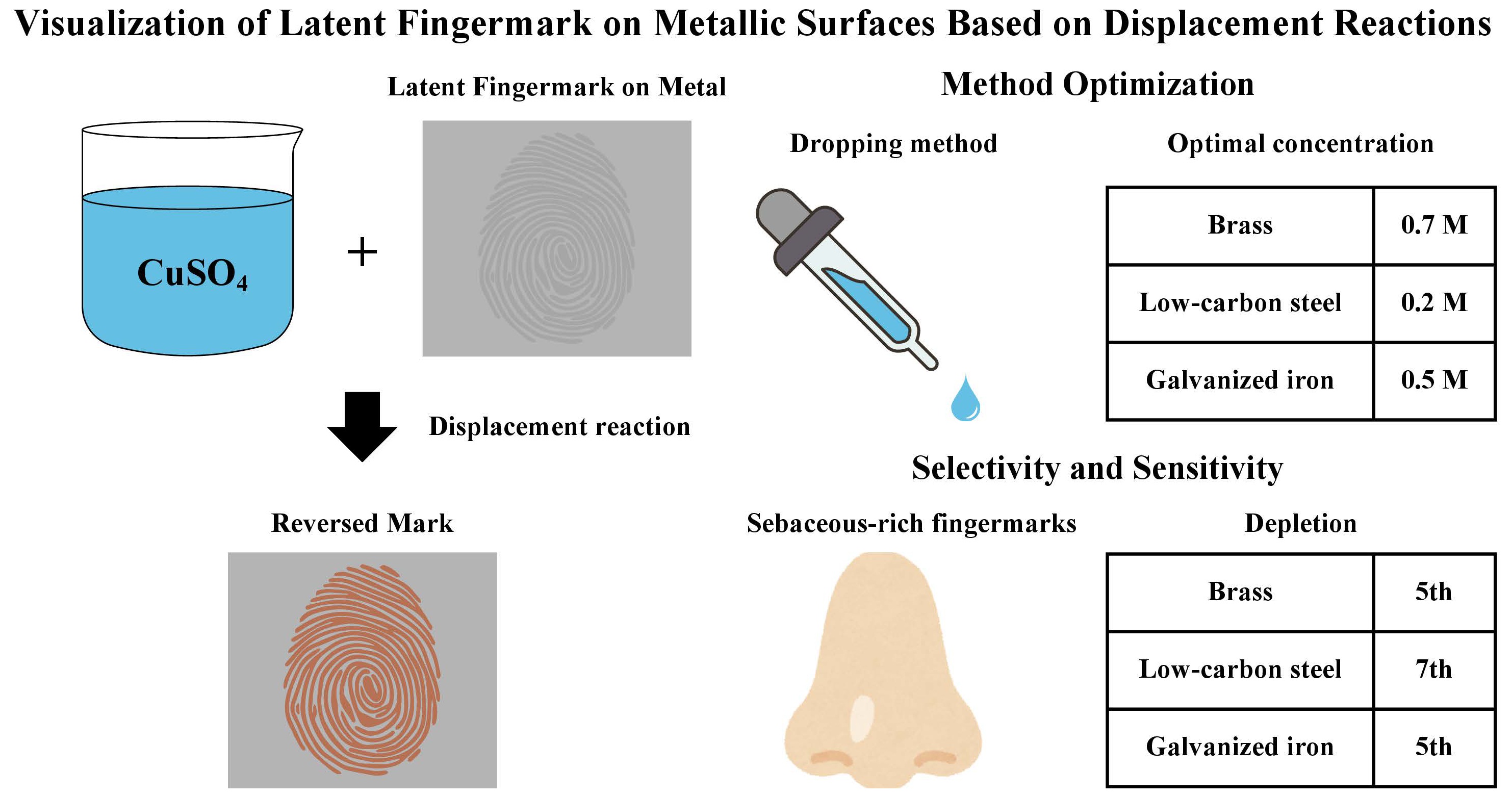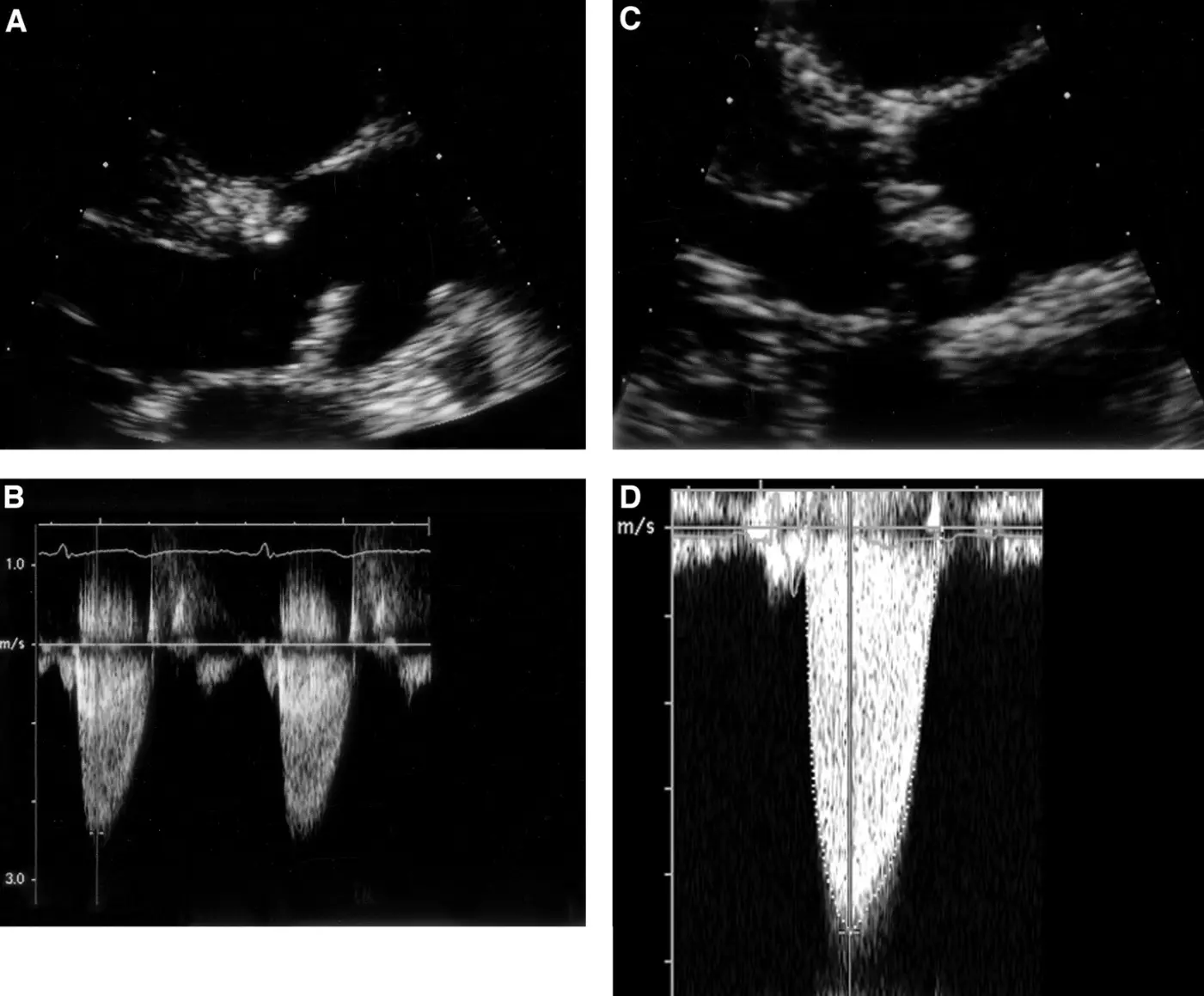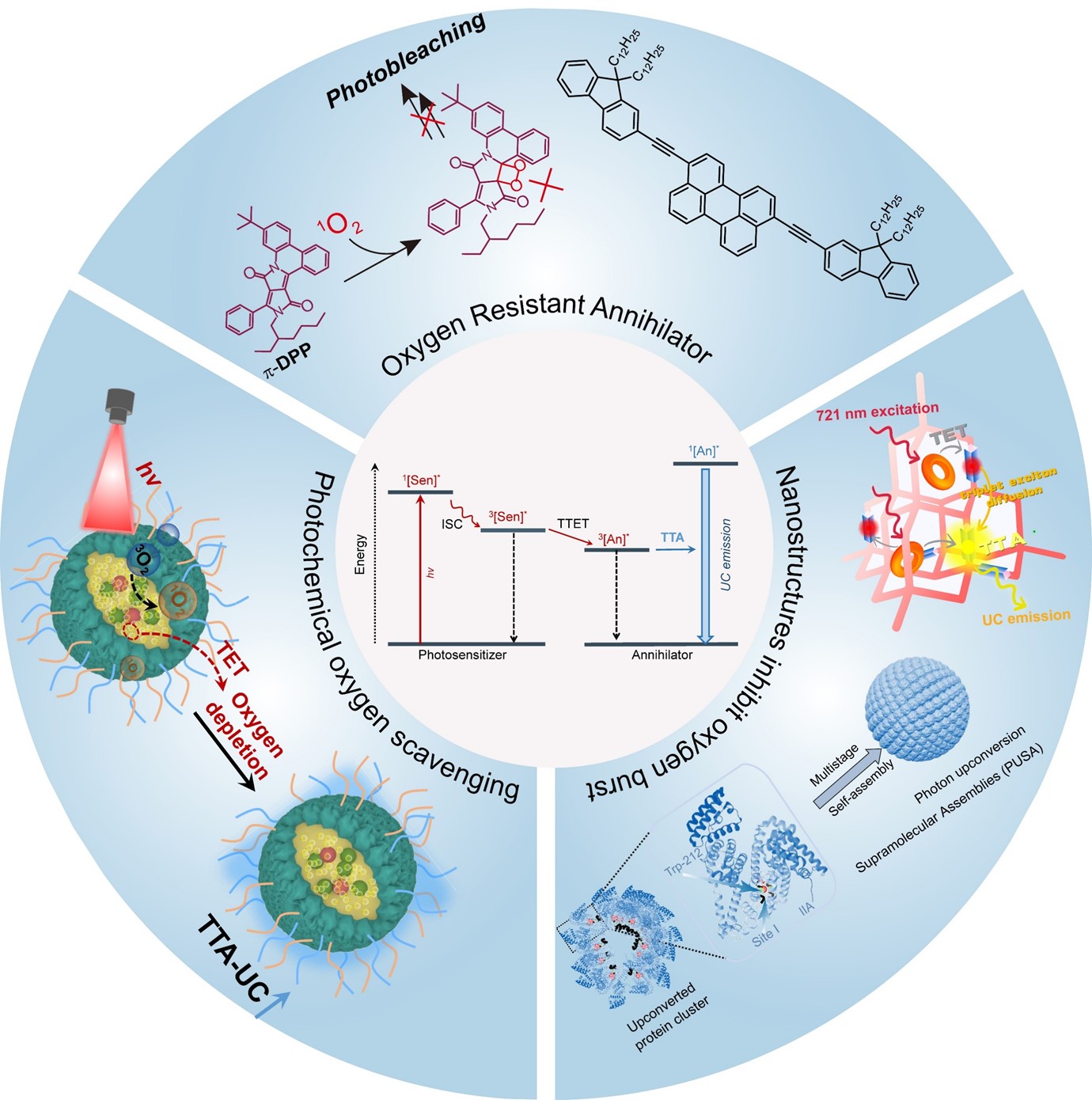Fingermarks are frequently left on metal surfaces such as kitchen utensils, door handles, or elevator buttons in crime scenes. They are crucial forensic evidence to identify individuals and link them to crimes. Fingermark development on metal surfaces targets either the fingermark residues or the substrate. This study aimed to develop a rapid fingermark development method based on displacement reactions between copper (II) sulphate and various types of metal substrates, such as brass, galvanized iron, and low-carbon steel. Immersion of the metal substrate was more effective in fingermark visualization than applying the solution using a dropper. The optimized concentrations of copper (II) sulphate solution for fingermark visualization were found to be 0.7 M for brass, 0.5 M for galvanized iron, and 0.2 M for low-carbon steel. Sebaceous-rich fingermarks were visualized after the 5th depletion on brass and galvanized iron, and even after the 7th depletion on low-carbon steel. Further improvement is required before incorporating the application of copper (II) sulphate onto metal substrates to visualize fingermarks in real crime cases, due to the destructive nature of substrate submersion.


Aortic stenosis (AS) is the most prevalent valvular heart disease in developed nations, with increasing incidence driven by population aging. Early and accurate diagnosis is crucial, as timely intervention significantly improves outcomes. Contemporary imaging plays a central role in the assessment of AS, enabling precise evaluation of valve anatomy, disease severity, left ventricular remodeling, and procedural planning. Transthoracic echocardiography remains the first-line modality, providing essential hemodynamic and structural data. However, limitations in cases of low-flow states, discordant grading, and atypical presentations necessitate adjunctive tools. Transesophageal echocardiography enhances visualization of valve morphology and annular dimensions, particularly for pre-procedural assessment. Cardiac computed tomography (CT) has emerged as a cornerstone in transcatheter aortic valve replacement (TAVR) planning, offering unparalleled spatial resolution for annular sizing, coronary height measurement, and vascular access evaluation. Meanwhile, cardiac magnetic resonance (CMR) provides robust quantification of ventricular volumes, fibrosis, and myocardial strain, serving as a prognostic marker in asymptomatic and borderline cases. The integration of multimodality imaging offers a comprehensive framework, addressing diagnostic ambiguities and guiding individualized management strategies. This review highlights current advances, clinical applications, and future directions in multimodality imaging for AS, emphasizing its pivotal role in optimizing patient selection, risk stratification, and procedural outcomes.

Triplet–triplet annihilation upconversion (TTA-UC) is an emerging class of photonic upconversion materials notable for low excitation power thresholds, high upconversion quantum yields, and tunable absorption and emission profiles. These unique features give TTA-UC materials significant potential across diverse fields such as chemistry, biology, and materials science. A typical TTA-UC system consists of sensitizers and annihilators, functioning through a sequence where the sensitizer absorbs photons and transfers triplet energy to the annihilator via triplet–triplet energy transfer, followed by triplet–triplet annihilation (TTA) that emits higher-energy photons. Because TTA-UC materials can be excited by long-wavelength light, they overcome the limitations in penetration depth of conventional fluorescence technologies, showing great promise for applications such as deep-tissue imaging, targeted photodynamic therapy, and precise optogenetic modulation. However, molecular oxygen causes non-radiative decay pathways that severely quench upconversion efficiency, posing a major challenge for practical use. Over the past decade, researchers have developed various innovative strategies to counteract oxygen-induced quenching. This review systematically summarizes key scientific approaches to creating high-performance, oxygen-tolerant TTA-UC materials, with a focus on their underlying mechanisms. First, we discuss molecular engineering strategies involving electron-deficient groups and conformational control to improve the photostability of TTA-UC chromophores. Second, we describe the fabrication of oxygen-resistant TTA-UC nanoparticles using reductive oil droplets as soft templates. Finally, we discuss nanostructure-mediated optimization of intermolecular triplet energy transfer dynamics to enhance oxygen resilience. A critical evaluation of the advantages and limitations of each approach is provided. Additionally, we highlight key challenges, including improving the upconversion efficiency of near-infrared-responsive TTA-UC, developing novel nanoparticle fabrication methods, and refining surface bioconjugation chemistry. We conclude by exploring prospects for integrating TTA-UC with synthetic biology techniques to design biosynthetic upconversion proteins, potentially establishing upconversion luminescence as a vital tool in fundamental life science research and accelerating its application in diverse biomedical fields.

3D-printed composites represent a cutting-edge advancement in additive manufacturing, offering the ability to fabricate high-strength, lightweight structures by embedding continuous fibers within a single deposition process. This innovative approach significantly enhances the mechanical performance of printed parts compared to traditional polymer-based 3D printing. In this article, we present a structured review of recent developments in 3D-printed composite technologies. The discussion is organized into three key areas: (i) the types and properties of continuous fibers used in 3D printing, (ii) the underlying mechanisms and systems that enable fiber deposition, and (iii) emerging strategies involving commingled materials that integrate reinforcement and matrix components at the filament level. This review aims to provide a comprehensive understanding of the current state and future directions of continuous fiber-reinforced additive manufacturing.
